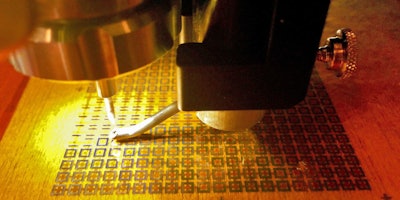
Researchers have found a way to potentially print “invisibility cloaks” and radar antenna directly onto military equipment, including tanks and aircraft.
“Near term, there is potential to print antennas on the outer surface with feeds to internal electronics below the surface,” Dr. Chris McCarroll, co-director with the Raytheon-UMass Lowell Research Institute, told Popular Mechanics. “We can put the very flat phased array system on the skin of an aircraft; it will have to be thin enough to not impact aerodynamics and other concerns.”
Without getting too technical, the Printed Electronics Research Collaborative housed at UMass Lowell, has developed a new ink-like substance to 3D print electrical components. Essentially, the ink enables printing of electronic devices that can be tuned to certain radio frequencies, including those used in military radar and in cars with automatic crash prevention.
PERC uses an aerosol-jet printer loaded with metal nanoparticles suspended in a thermoplastic polymer, as described by the MIT Technology Review. When the material printed and cured, its electrical properties can be controlled by voltage.
Acting as a frequency filter, the printed material can detect, block and send specific signals.
The printing and curing processes can occur at low enough temperatures to be compatible with plastics, which sets this technology apart from other high-performance electronics manufacturing. Plus, the 3D printing process offers lower costs and a faster turnaround than current methods.
Will this method revolutionize our military’s stealth operations? What other possible applications do you see? Comment below or tweet @MNetKatie.






















